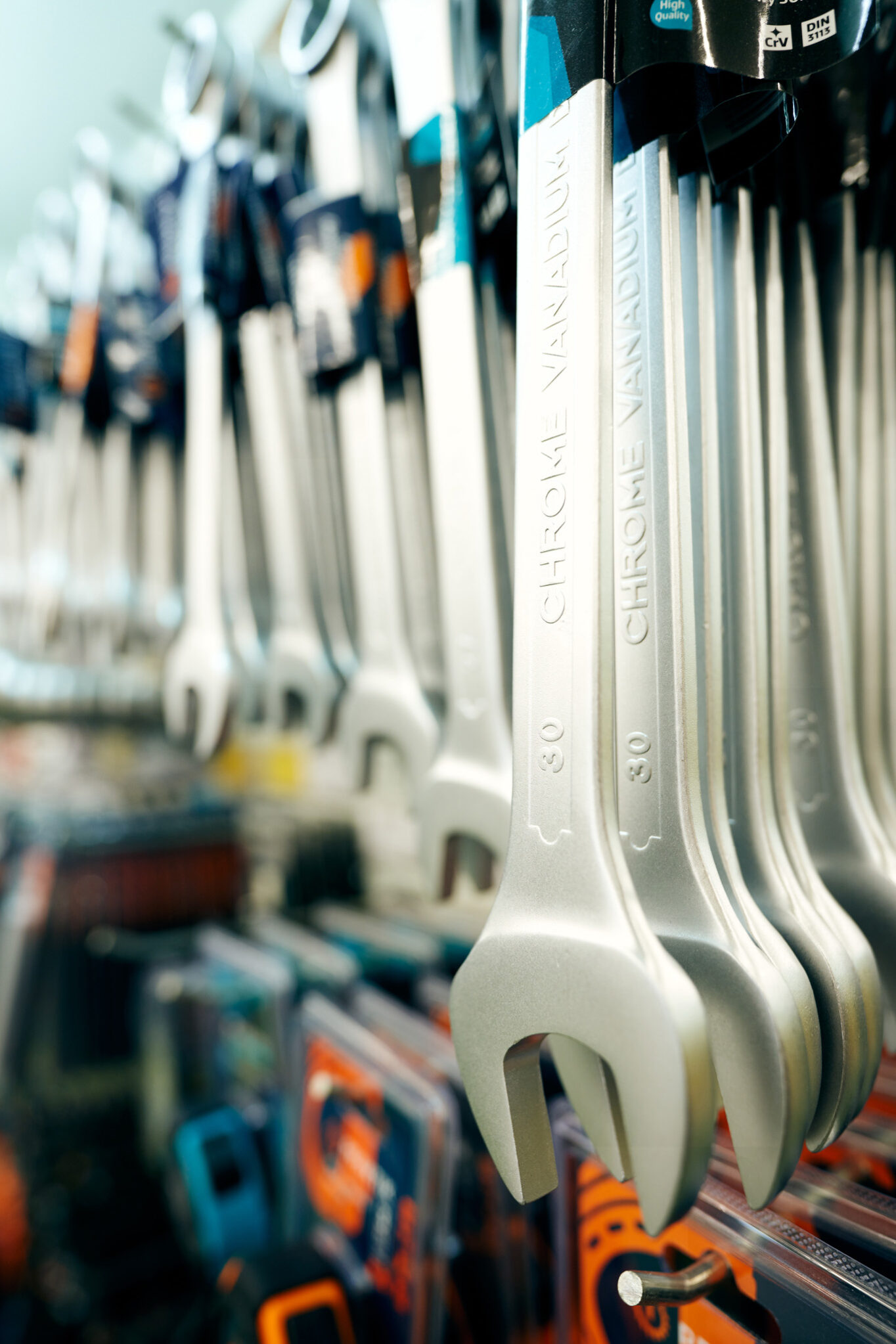
How to select the right wrench size for screws? A practical guide
Choosing the appropriate tool for working with screws is crucial for achieving proper tightening or loosening of fastening elements. A wrench for screws, regardless of their type, should be properly selected to avoid damaging both the wrench and the screw itself. In this article, we will present different types of wrenches, methods for checking screw sizes, and tips for effective tightening and loosening. You will learn how important it is to match the wrench to the thread diameter and screw head type.
What are the types of wrenches for screws?
Many types of wrenches for screws are available on the market, which differ in both construction and intended use. Open-end wrenches, box-end wrenches, and socket wrenches are the most popular types that can be used for different screws and nuts. Open-end wrenches are characterized by simple construction and are ideal for working in tight spaces. Box-end wrenches allow for precise fitting to the screw head, which facilitates tightening and loosening. Socket wrenches, often used in mechanics, are extremely versatile and available in various sizes, enabling comprehensive application in different cases.
The most commonly encountered wrenches also include metric and imperial wrenches, which differ in sizes. Metric wrenches are adapted to screws with metric threads, such as M8 or M10 screws, while imperial wrenches are intended for imperial screws. It’s worth paying attention to the wrench designation, which indicates its size, making it easier to select the appropriate tool for a specific screw. Choosing the right wrench is crucial for work efficiency and user safety, so it’s worth investing in high-quality tools.
How to check screw size?
To select the appropriate wrench size, you must first check the screw size. This can be done in several ways, but the most precise tool for measuring thread diameter is calipers. Using calipers, you can accurately measure the screw diameter and thread pitch, which will allow determining what size wrench will be needed. For screws with different head shapes, such as hex head screws, it’s also worth measuring the width to select a wrench appropriate to the shape. Remember that selecting a wrench for a screw requires precise measurement to avoid damaging fastening elements.
In addition to calipers, there are also size tables that can help quickly determine which wrench will be appropriate for a given screw. These tables contain information about wrench sizes and their corresponding screw diameters and threads. This allows you to quickly and easily find the right wrench without needing to perform complicated measurements. It’s good to have such a table handy, especially if you often work with different types of screws and wrenches. Remember that precision when checking screw size is crucial for effective tightening and loosening.
How to select the appropriate wrench size for a screw?
Selecting the appropriate wrench size for a screw is a process that requires attention and precision. First, you need to identify the screw type and its thread, which will allow determining what size wrench will be needed. A wrench for an M8 screw will differ from the wrench needed for screws with larger diameters, such as M10. It’s important not to select a wrench based on appearance alone, but to rely on accurate measurements and size tables that indicate which wrenches fit specific screws and nuts.
For hex head screws, a box-end or socket wrench may be the best choice because it enables better fitting to the head shape. An open-end wrench can be used in situations where access to the screw is limited, but may not provide the same precision as a box-end wrench. A well-selected wrench allows for effective tightening and loosening of screws, which is particularly important for fastening elements that must be properly secured. It’s also worth paying attention to wrench quality, as solid tools will be more durable and reliable.
How to effectively tighten and loosen screws?
Effective tightening and loosening of screws requires applying appropriate technique and matched tools. Before starting work, make sure the wrench is well-matched to the screw head to avoid damage. When tightening screws, it’s important not to apply excessive force, which can lead to thread destruction. It’s good to tighten screws evenly, which prevents their deformation. When loosening, it’s worth using a wrench that feels good in your hand, which increases precision and work comfort.
It’s also worth remembering to use appropriate techniques, such as gentle impacts during loosening, which can help in loosening seized screws. For screws with high resistance, using a penetrating agent can facilitate the process. Always ensure the wrench is clean and free from contamination, which can affect its operation. Effective tightening and loosening of screws is a skill that requires practice, but with appropriate tools and technique, you can achieve excellent results in any situation.
- Information for Customers - 7 November 2025
- Wood screws – selecting length and thread type - 29 October 2025
- Rivet Nuts – sizes, types, and how to use them - 29 October 2025